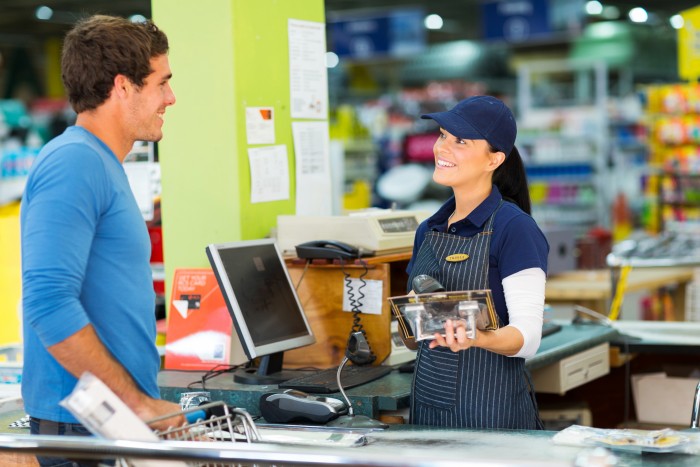Bricks and mortar stores step up

Tim Brooks of World Wide Technology
Long drives to stores, items out of stock, no staff available to help – these common complaints about brick-and-mortar shops have made it easy to see why e-commerce has enticed customers away from physical retailers over the last decade. However, perhaps just in time, IoT is coming to the rescue to revitalise the shopping experience bringing together the best elements of online and in-person shopping.
Out of the back office
IoT technologies have long been used in the back office to track and replenish stock. However, retailers are increasingly able to reap the benefit of an IoT connected experience as connected technologies come to the shop floor, says Tim Brooks, principal consultant for Retail Solutions at World Wide Technology.
For example, high-street food outlets are deploying sensors that monitor fridges to keep stock fresh and track usage of restaurant spaces. The friction of the sales process is being greatly smoothed out as portable Point of Sale (PoS) devices are making their way into the hands of customers and shop staff. This means that orders can be made before the checkout and even before the customer has entered the store.
A fresh experience
When it comes to navigating the bewildering isles of a large store, IoT connections are providing a leap forward. Virtual Bluetooth Low Energy (vBLE) beacons and improved RFID technologies are two recent innovations in wireless technology that are enabling great leaps in location-based and personalised experiences within the confines of a retail store. Replacing fixed WiFi access points, which relied on triangulation to locate customer devices, vBLE beacons and RFID offer new standards of accuracy and versatility.
For the smart-phone equipped consumer (nowadays, almost everyone) ultra-targeted product information can be retrieved via their devices. For example, when standing in the laptops aisle of an electrical store, offers specific to the laptop range can be displayed on screen, or more precisely still – specifications of the merchandise or logical additions to the merchandise you are stood in front of.
Shop assistants can also use this location data in real time. For example, in a large warehouse store it is sometimes difficult to deploy sales staff to all visitors in the appropriate location at the right time to assist with a sale. Location based vBLE-enabled services enable floor staff to find and prioritise customers in real-time. One of brick-and-mortar’s big advantages over online retail is the human service relationship – innovative retailers are finding that maximising this is key to retaining a competitive edge.
If a tree falls in the forest…
These new interactions are creating new data points that can be analysed and turned into actionable business insights. Information on the effectiveness of merchandising, most visited products and even profiles of store visitors can be collected and utilised to intelligently adapt stock, layout and pricing. A big challenge for retailers is often this last step – taking the data and effectively using it on the ground. We are seeing technology partners, who offer lab-based services, bridge the gap in big data analytics.
Competing head-on
We’ve all been there: having seen a product that we like on the shelf, a quick search online finds the same item at a fraction of the price. The cumbersome pricing models within brick-and-mortar stores have made it almost impossible to keep up with the price agility of internet retailers, making some shops simply feel like show-rooms.
Though the ability exists to track the products that consumers are viewing online in a particular area, physical stores are now finding themselves able to dynamically adapt pricing to become more competitive – greatly increasing the chance that a purchase will happen in-store.
Bricks and mortar retailers are staging a resurgence, often armed with latest in connected technology to stay in the race with online outlets. In fact, Amazon just opened their first book shop in New York – it’s a smarter, data-driven, friction less brick and mortar store. Amazon is the king of e-commerce, so when they open a physical shop it’s a good sign that they believe there’s life in bricks and mortar yet.
The author of this blog is Tim Brooks, principal consultant for Retail Solutions at World Wide Technology
Comment on this article below or via Twitter @IoTGN
